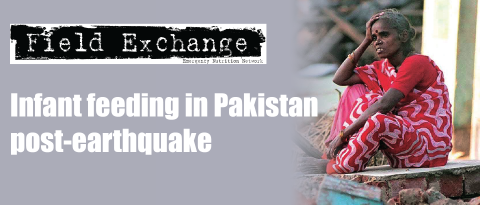Use of cash in the tsunami response
As part of its Cash Learning Project, the Humanitarian Policy Group (HPG) at the Overseas Development Institute (ODI) is undertaking research into the use of cash in the tsunami response1. The project seeks to promote best practice in cash interventions through the development of guidelines for planning, implementing, monitoring and evaluating cash projects. The project also explores when cash is not the best option. Questions facing implementers can be grouped as follows;
- The type of economic assistance to provide (cash, vouchers and in-kind assistance).
- The best way to provide these resources (direct disbursement of cash/vouchers or through a financial institution).
- The conditions to attach to the transfer (grant, loan or revolving fund).
There are several important areas of findings at this stage of the project.
Planning and monitoring
Lack of information at the planning stage on important context variables (e.g. pre-tsunami access to credit, traditional forms of self-help, seasonality of livelihood patterns, etc) has limited the effectiveness of some interventions and caused problems for others. Monitoring of cash grants has also been problematic. Most projects have given out thousands of grants and it is not clear whether it is necessary to monitor all or just a sample of these.
Cash/vouchers or in - kind assistance
Determining the appropriate type of transfer entails assessing what people need and determining whether the market can supply it - usually through a livelihoods or rapid food security assessment. Guidelines are emerging from a number of agencies, but there remains a considerable gap between the contents of these guidelines and staff knowledge and skills. There are some situations when in-kind assistance, rather than cash, is beneficial to both the agency and beneficiary. Examples from the tsunami project include;
- when the desired commodity is not available in the market and there is little chance of organising traders to supply a weak and dis parate market, or
- when an agency can exploit economies of scale to get a better rate for services or goods.
Cash for work
Agencies noted that beneficiaries had reported psychosocial benefits from cash for work projects implemented in the immediate aftermath of the tsunami. Areas for improvement in cash for work interventions have been identified, considering:
- the lack of attention to child care and work opportunities for women
- child protection meetings often focused on the 'rules' banning children from working and failed to consider assistance for labourpoor households
- some project outputs were of substandard quality.
Mechanisms for cash disbursement

Vouchers are one of the options in cash programming
Cash disbursement options vary by context, by project type and over time. In most situations, agencies have transferred the cash by vehicle using agency staff and have encountered no problems. However, there is considerable diversity in policies, systems and procedures between agencies. Some agencies started to use banks while others did not, regarding them as too complicated or not desired.
Cash grants or loan - assistance options for livelihood recovery
Livelihood recovery assistance has been provided to beneficiaries as grants (no repayment required), loans (repayment required), or a mix of the two. Some agencies argue that in the posttsunami context, poor people who have lost their assets should have them replaced for free. Others believe that extending aid to include replacing lost assets encourages dependency. In the same vein, microfinance bodies warn that grants may damage microfinance initiatives (MFIs) if there is inadequate distinction between grants and loans. Some agencies make a distinction between grants and loans by providing grants to poorer households, and loans to those who had medium-sized businesses prior to the tsunami.
The Cash Learning Project has identified a number of issues for further work:
- More information is needed about the impact of the tsunami and subsequent assistance on the functioning of debt and credit markets.
- The lessons of the pilot projects being implemented by CARE and WFP should be documented.
- Support should be given to agencies designing monitoring systems for cash grants.
- Aid agencies need a better understanding of government cash disbursement systems and the potential links between government and NGO assistance and long-term social welfare.
- There is scope to explore the potential for using banks and other financial institutions to transfer cash.
1Adams. L (2005). Cash-based transfers - and alternatives - in tsunami recovery programmes. Humanitarian Exchange, volume 35, December 2005, pp 16-18
Imported from FEX website


